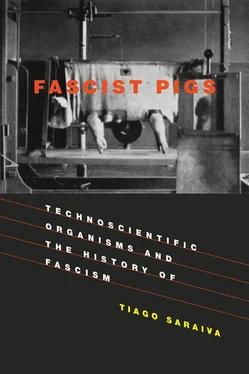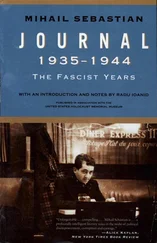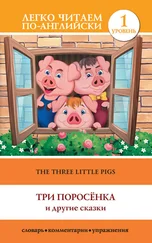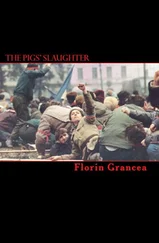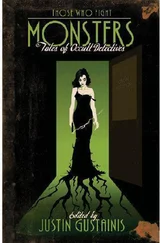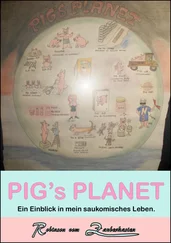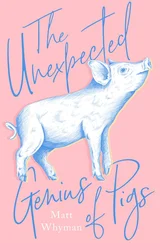Dos Santos Pereira, Plano de A cção, pp. 18–19.
Ibid., p. 7.
Ibid., p. 8.
Ruy Duarte de Carvalho, Aviso à navegação. Olhar sucinto e preliminar sobre os pastores Kuvale da província do Namibe com um relance sobre as outras sociedades agropastoris do Sudoeste de Angola (Instituto Nacional do Livro e do Disco, 1997), p. 29.
For a more extensive discussion of mimesis and colonial violence associated with Karakul farming in Angola, see Tiago Saraiva, “Mimetismo colonial e reprodução animal: carneiros caracul no Sudoeste angolano,” Etnográfica 18, no. 1 (2014): 209–227.
Freyre, Aventura e Rotina , p. 374.
Ibid., p. 375.
Dos Santos Pereira, “Situação do caraculo Angolano.”
See, for example, James C. Scott, Seeing Like a State: How Certain Schemes to Improve the Human Condition Have Failed (Yale University Press, 1998); Timothy Mitchell, Rule of Experts: Egypt, Techno-politics, Modernity (University of California Press, 2002).
José de Sousa Bettencourt e José Gonçalves Cotta, O Aspecto económico-social do empreendimento da indústria pastoril dos ovinos caracul (Instituto de investigação Científica de Angola—Luanda) (21/3/1962), AIPAD.
On Cinati’s Itinerário Angolano , see Cláudia Castelo, “‘New Brazils’ in Africa: Development and Portuguese late colonialism,” Varia Historia 30, no. 53 (2014): 507–532.
Ruy Cinatti, Itinerário Angolano , in Ruy Cinatti Papers , Pasta Angola. Biblioteca Universitária Papa João Paulo II, Universidade Católica Portuguesa, p. 147. Once more I thank Cláudia Castelo for showing me this source.
Another name for the Kuvale.
Cinatti, Itinerário Angolano , pp. 147–148.
On the effects of colonial occupation on the Kuvale, see Ruy Duarte de Carvalho, Aviso à Navegação. Olhar Sucinto e Preliminar sobre os Pastores Kuvale da Província do Namibe com um Relance sobre as Outras Sociedades Agropastoris do Sudeste de Angola (Instituto Nacional do Livro e do Disco, 1997); Eduardo Cruz de Carvalho, “Traditional and modern patterns of cattle in southwestern Angola: A critical evaluation from pastoralism to ranching,” Journal of Developing Areas 8, no. 2 (1974): 199–226; Elisete Silva, Impactos da ocupação colonial nas sociedades rurais do sul de Angola (Centro de Estudos Africanos / ISCTE, 2003).
Salvador de Figueiredo, Angola, o último café (Torres Vedras, 2006), pp. 150–157.
Ruy Duarte de Carvalho, Como se o Mundo não tivesse Leste (Limiar, 1977).
Richard Grunberger, The 12-Year Reich: A Social History of Nazi Germany (Holt, Rinehart and Winston, 1971); Christoph Kühberger, Metaphern der Macht. Ein kultureller Vergleich der politischen Feste im faschistischen Italien und im nationalsozialistischen Deutschland (LIT, 2006).
Roger Griffin, Modernism and Fascism: The Sense of a Beginning under Mussolini and Hitler (Palgrave Macmillan, 2007), pp. 271–278; Michael Burleigh, “National Socialism as a Political Religion,” Totalitarian Movements and Political Religions 1, no. 2 (2000): 1–26; Klaus Vondung, “National Socialism as a political religion: Potentials and limits of an analytical concept,” Totalitarian Movements and Political Religions 6 (2005): 87–95.
Mats Burström and Bernhard Gelderblom. “Dealing with difficult heritage: The case of Bückeberg, site of the Third Reich Harvest Festival,” Journal of Social Archaeology 11, no. 3 (2011): 266–282.
Konrad Warner, “Harvest festival, 1935,” in Travels in the Reich 1933–45: Foreign Authors Report from Germany , ed. O. Lubrich (University of Chicago Press, 2010), pp. 77–78.
Rainer Stommer, Die inszenierte Volksgemeinschaft. Die Thing-Bewegung im Dritten Reich (Jonas, 1985).
Ken Alder, “Introduction to focus section on thick things,” Isis 98, no. 1 (2007): 80–88. See Bruno Latour, “From Realpolitik to Dingpolitik,” in Making Things Public: Atmospheres of Democracy , ed. B. Latour and P. Weibel (MIT Press, 2005); Lorraine Daston, ed., Things That Talk: Object Lessons from Art and Science (Zone, 2004); Hans-Jörg Rheinberger, Toward a History of Epistemic Things: Synthesizing Proteins in Test Tube (Stanford University Press, 1997); Rheinberger, An Epistemology of the Concrete. Twentieth-Century Histories of Life (Duke University Press, 2010); John Tresch, “Technological world-pictures: Cosmic things and cosmograms,” Isis 98, no. 1 (2007): 84–99.
Alder, “Introduction,” p. 81.
Bruno Latour, Politiques de la nature: comment faire entrer les sciences en démocratie (La Découverte, 1999). For a collection of exemplary practices stemming from the overcoming of modern dualisms, see Michel Callon, Pierre Lascoumes, and Yannick Barthe, Agir dans un monde incertain: essai sur la démocratie technique (Seuil, 2001).
Such views of democracy as experimental process owe much to pragmatism as advocated by John Dewey in Reconstruction in Philosophy (Beacon, 1957; first edition 1920).
Latour, “From Realpolitik to Dingpolitik,” p. 23.
On this transition, see Tresch, “Technological world-pictures.” For other sources and references of the ‘thing’ talk in studies of material culture in anthropology, see Soraya de Chadarevian, “Things and the archives of recent sciences,” Studies in History and Philosophy of Science 44, no. 4 (2013): 634–638.
Bruno Latour, “Spheres and networks: Two ways of reinterpreting globalization,” Harvard Design Magazine 30 (2004): 138–144.
Peter E. Gordon, “Heidegger in Black,” New York Review of Books , October 9, 2014.
Martin Heidegger, “Building, dwelling, thinking,” in Basic Writings (Harper Collins, 1993).
Martin Heidegger, Überlegungen , Gesamtausgabe vol. 96, ed. P. Trawny (Klostermann, 2014), pp. 56–57 (XII, 38); English translation by Richard Polt.
Ibid.
Ibid.
Martin Heidegger, Contributions to Philosophy (of the Event) (Indiana University Press, 2012; first edition 1989), p. 98 (emphasis added).
Ibid., p. 112.
See Richard Rorty, “Heidegger and the atomic bomb,” in Making Things Public: Atmospheres of Democracy , ed. B. Latour and P. Weibel (MIT Press, 2005), pp. 274–275.
Heidegger, “Building, dwelling, thinking,” p. 348.
Читать дальше
